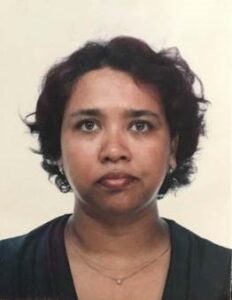Novel porous fluorapatite scaffolds for bone tissue regeneration
Sujee Jeyapalina, PhD
Research Associate Professor,
Division of Plastic Surgery, Department of Surgery
University of Utah
Friday, November 11th at 11:45 am
In-Person in SMBB 2650!

Bone grafts are used in various clinical settings to aid bone repair and regeneration. In recent years, the United States and other countries worldwide have experienced an increasingly high demand for functional bone grafts. The current clinical gold standard is an autograft, which is harvested during reconstructive surgery. However, autograft donor sites are limited in the amount of tissue available, and secondary surgical sites are usually required. While allografts harvested from cadaveric sources eliminate the need for secondary surgical sites and have the advantage of being osteoconductive, they are associated with the risk of host rejection and accelerated graft resorption. The downsides of autograft and allograft bone techniques have impelled the development of bioengineered graft materials. As part of this quest, we developed fluorapatite (FA)-based bone scaffolds. Our in vivo data showed that, in 12 weeks, the pores within the fluorapatite scaffolds became wholly filled with viable new bone tissue, demonstrating the efficacy of these scaffolds in regenerating bone tissues. We continue to develop this novel material for clinical applications as a viable alternative to autograft. For this, we are creating an antimicrobial, “autograft-like” bone scaffold to repair critical-size defects by infiltrating the FA scaffold with stromal vascular fraction cells as an osteogenic cell source and co-synthesizing other known antimicrobial apatites with FAs.
Sujee Jeyapalina is an Associate Research Professor in the Division of Plastic Surgery and Research Science at the Department of Veterans Affairs Salt Lake City Hospital. She holds a Bachelor of Science in Chemistry and a Master of Science in Chemical Research from King’s College, University of London. She obtained her Doctoral degree in Chemistry from the University of Leicester. She worked as a post-doctoral researcher at the National University of Singapore and the University of Loughborough between 2005-2008. After that, she joined the University of Utah’s osseointegration team in 2008. For the past 14 years, she has been relentlessly working with this team to bring a safer osseointegrated prosthesis design concept to an FDA-approved clinical trial. She also has developed many animal models for studying the skin-implant and bone-implant interfaces. Now, she is leading her independent research on biomaterial-tissue interfaces with an emphasis on mechanistic pathways. She has more than 30 publications in this area and over 15 issued or pending patents. Her research interests include percutaneous osseointegrated prosthetics, breast implant infections, bone replacement biomaterial development, biomimetic coating, nano-scale and micro-scale surfaces, COVID-19, medical device designs, novel antimicrobial development, and clinical translation.
Biomedical Engineering Seminar Series
Bioengineering Elevated Talks: Celebrating 50 years of the Department of
Biomedical Engineering at the University of Utah